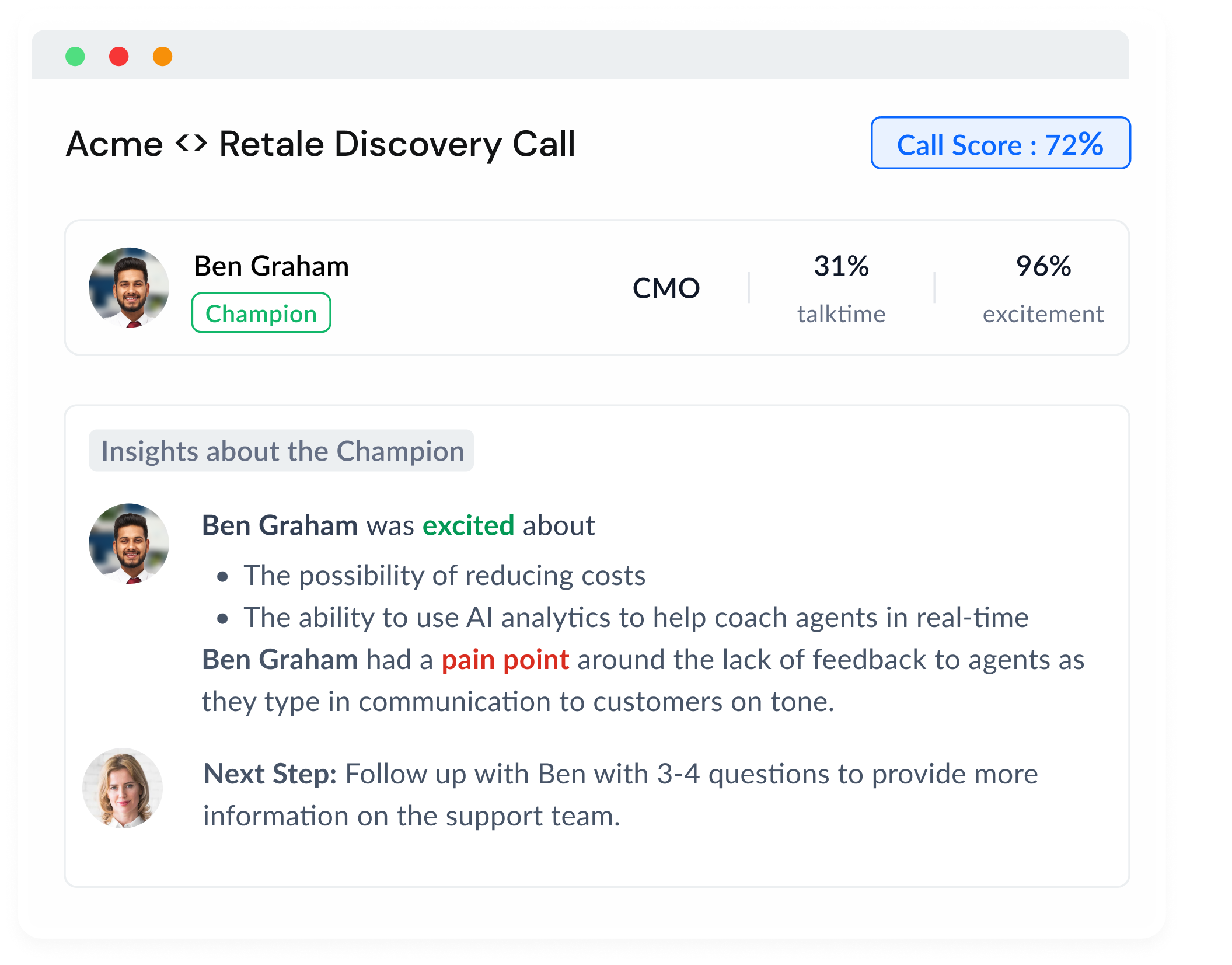Introduction to Agile Sales Strategies and Its Benefits: A New Approach to an Old Art
When you think of software development, you might imagine a room full of nerds coding away in a dimly lit basement. But those very same nerds might have valuable lessons that us suave salespeople can learn.
No, I'm not talking about how to solve a Rubik's Cube faster than your friends at office parties. I'm talking about Agile methodology in sales! It's a valuable approach that helps sales teams stay more flexible, adaptive, and ultimately, successful.
Indeed, it turns out that Agile isn't just for software development teams anymore; it's being used across various industries and, lucky for us, it's perfect for improving sales processes.
Imagine making your sales cycles shorter and continuously improving your sales strategy based on data-driven insights. Sounds great, right? Well, stick with me as I walk you through the benefits of Agile and how it's revolutionizing the sales landscape.
Comparison of Traditional Sales Methods and Agile Methodology in Sales: The Slow and Steady Turtle Vs. The Agile Hare
Picture this: your sales team is relying on a tried-and-true sales strategy that has been passed down through generations. It's a thing of tradition, following the same old corporate dance of quarterly goals, uber-lengthy meetings, and throwing darts at potential leads.
Now, picture the fast and fearless hare, aka Agile sales. Instead of adhering to stiff, unchanging plans and processes, Agile sales strategies embrace flexibility, collaboration, and constantly improving methods to achieve better results.
Don't get me wrong, traditional sales methods have had their day, but this is the era of Agile. If we want to outcompete in a market that's changing faster than we can say "Hold my coffee!", we need to be able to adapt and pivot faster than ever before.
Ready to learn how to be the Agile hare and leave the slow-and-steady sales strategy turtle in the dust? Let's dive into the principles of Agile methodology and how these can boost your sales performance.
Learning from Software Development: Agile Methodology in Sales
Stepping into the world of Agile, what lessons can we learn from software development teams? Agile software development is based on the principles of collaboration, iterative planning, flexibility, delivering small increments of value, and constant improvement. Sounds enticing, right? Well, say hello to your new favorite sales philosophy because these principles can definitely be applied to boost your sales performance!
Here's a brief rundown of some key Agile principles and their sales applications:
- Collaboration: Encourage cross-functional teams to work together and share knowledge to improve the sales process. This way, everyone feels invested in the project and works towards a common goal.
- Iterative Planning: Break down long sales cycles into smaller, manageable stages. Regularly review your progress and adjust your strategy based on real-time feedback and data.
- Flexibility: Prospects' needs and the market landscape can change rapidly. Agile methodology allows open-minded sales reps to adapt their strategies and spot opportunities that the old-school turtles might miss.
- Continuous Improvement: Collect data and feedback throughout the sales process. Agile sales teams use this information to constantly refine their approach and techniques.
Fun fact: According to an HBR article, incorporating Agile practices across various industries leads to a 20-30% improvement in productivity. Now, wouldn't you want a slice of that productivity pie? Let's take an in-depth look at some Agile sales strategies inspired by software development.
Agile Sales Strategies: Lessons from Software Development
1. Collaboration and Flexibility in the Sales Process
As you walk (or sprint) down the Agile path, you'll find it full of teamwork and flexibility. Start by promoting collaboration by bringing sales, marketing, customer success, and other teams together. Just like a well-oiled software development team, sharing knowledge and expertise across departments helps in setting clearer goals and delivering better results.
Keep an eye out for unexpected opportunities. Agile sales teams are known to be adaptable to changes in customer expectations or market conditions, allowing them to capitalize on these opportunities quicker than their traditional competitors. Never underestimate the value of having an open mind when it comes to strategy.
2. Shortening Sales Cycles with Iterative Planning
Breaking down sales cycles into shorter periods, often called “sprints,” helps the sales team to adapt and adjust more easily. Instead of getting stuck in lengthy traditional cycles, Agile sales reps stay nimble and use smaller goals to make progress, constantly learning from successes and hiccups.
Remember, Agile is all about adaptability. Keep adjusting your strategies as you gather more data and insights throughout these sprints. Feeling like your inner Agile hare is getting winded? Don't fret – continuous improvement is part of the process!
3. Embracing a Data-Driven Approach and Continuous Improvement
In today's world, data is king. Agile sales teams know this all too well. They focus on collecting valuable data throughout the sales cycle, using these insights to improve their decision-making.
Learning from every interaction with prospects and customers is crucial. Whether it’s a successful demo or a feedback call gone awry, Agile sales reps use each experience as an opportunity to fine-tune their approach. After all, it takes a few stumbles before you can dance like nobody’s watching. Well, in this case, like your customers are loving it.
Putting Agile Methodology into Action: Tips for Sales Teams
Alright, now that you’ve seen the perks of Agile sales strategies, you’re probably chomping at the bit to put these principles to work. Fear not, fellow sales enthusiast, we’ve got some tips to help you and your team embrace the Agile way of life:
1. Align Sales Team Goals with Agile Strategies
First things first, your sales team goals need to align with Agile strategies. Instead of solely focusing on quotas and revenue, incorporate goals like shorter response times, increased collaboration, and continuous learning. Remember, Rome wasn’t built in a day… but with Agile sales, it might’ve been built faster!
2. Effective Communication and Feedback Loops
Open communication channels within and between teams are the lifeblood of Agile. Emphasize the importance of open dialogue, seeking and providing feedback, and sharing knowledge across your sales team. Weekly or biweekly stand-ups and retrospective meetings allow your team to discuss progress, address issues, and celebrate wins, all while keeping the Agile spirit alive and kicking!
3. Adapting and Learning from Your Customers
Customer-centricity is key in Agile sales. Prioritize listening and learning from your customers, adapting to their needs and preferences. By being responsive and providing a customized solution, you’ll create happier customers who see you as a trusted partner, rather than just another sales rep. A data-driven and adaptable sales team is the master chef, cooking up a feast for customers to relish!
Measuring Success: Agile Metrics for Sales Teams
With Agile sales strategies in full swing, how do you measure if they're bringing the results you seek? Just like any other software release, performance metrics are crucial to track progress and success. Here are some key performance indicators (KPIs) for Agile sales teams:
- Lead Response Time: Track how quickly your team responds to new leads, as Agile sales reps aim to initiate conversations sooner than their traditional counterparts.
- Conversion Rate: Measure the percentage of leads that convert into paying customers. This indicates the effectiveness of your sales strategies.
- Deal Velocity: Assess the speed at which your team moves deals through the sales funnel. Agile sales teams focus on shortening sales cycles and closing deals more quickly.
- Customer Satisfaction: Keep tabs on your customer satisfaction scores, as Agile sales strategies emphasize the importance of creating happy, loyal clients.
- Feedback and Learnings: Make sure to track both quantitative and qualitative insights based on customer feedback, internal meetings, and other sources to continually improve your sales process.
Don’t forget, Sybill’s AI coach can help track progress, analyze data, and optimize your Agile sales strategies. With Sybill in your toolkit, your sales teams can reach new heights of efficiency and success!
Evaluating the Effectiveness of Your Agile Sales Approach
With all those shiny KPIs and Sybill's AI coach, evaluating the effectiveness of your Agile sales approach becomes a breeze. The key is to keep an eye on those performance metrics, identify opportunities for improvement, and ensure you align your goals with Agile principles.
By diligently tracking your team's results and comparing them to the goals you set, you'll see the impact of Agile methodology in sales and have a clear picture of areas where your team can improve. Here's a handy guide to help boost your journey of continuous growth.
Conclusion: Transform Your Sales Strategy with Lessons from Software Development
From software development to sales, Agile methodology is revolutionizing how we work. Embracing these principles in your sales process can lead to improved productivity, better collaboration, shorter sales cycles, a data-driven approach, and, ultimately, happier customers.
As your sales team ventures into the brave new Agile world, remember that continuous improvement is the name of the game. Adapt, evolve, and stay open to change – your customers and your bottom line will thank you for it! 🚀















.png)





